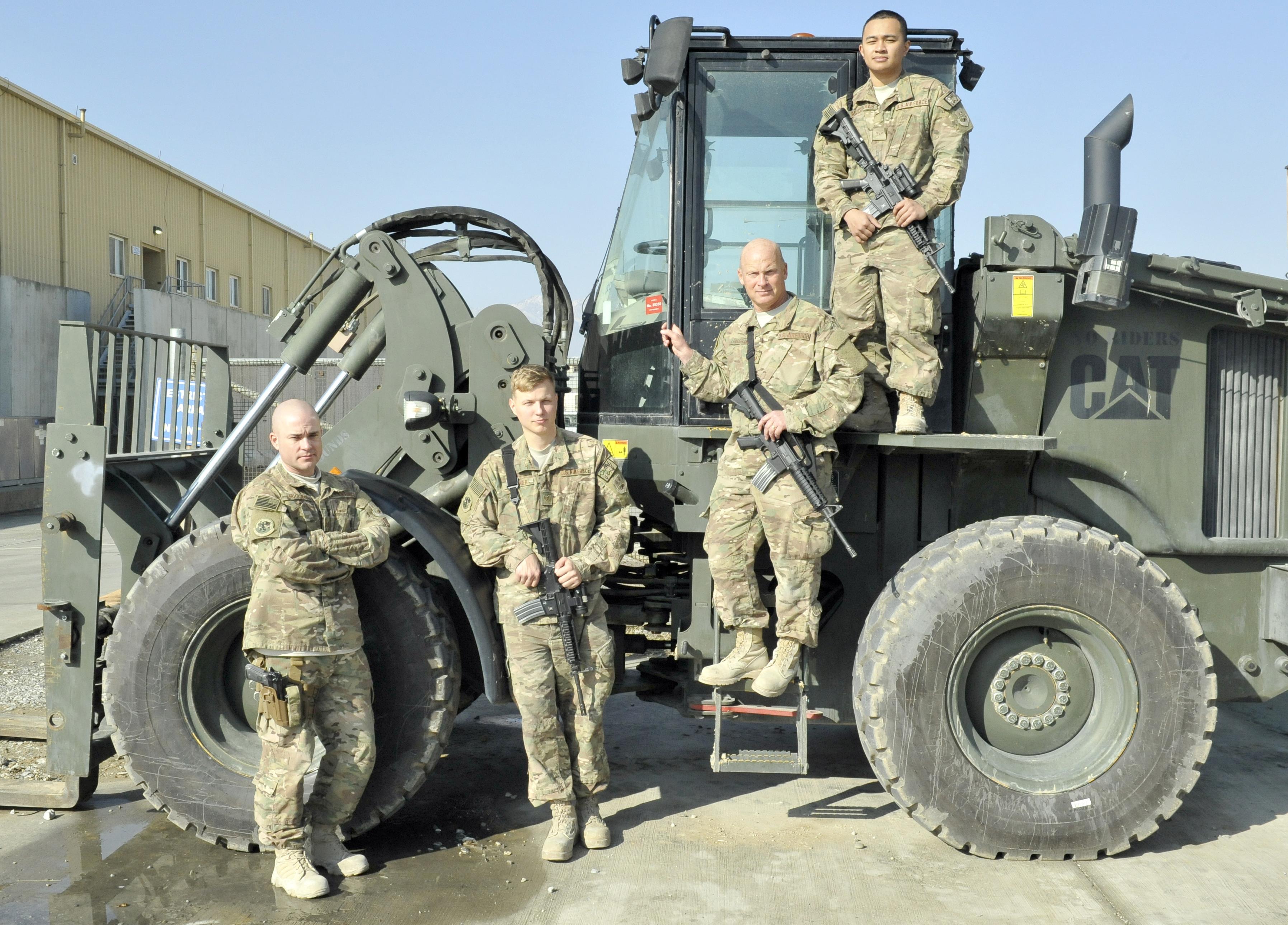By Capt. Bryan Bouchard, 455th Air Expeditionary Wing Public
Affairs / Published January 10, 2016
BAGRAM AIRFIELD, Afghanistan (AFNS) -- Four Airmen deployed
with the 455th Expeditionary Logistics Readiness Squadron at Bagram Airfield
sprang into action following a Jan. 4 terrorist attack on a compound in Kabul,
Afghanistan.
The Airmen were in Kabul as part of U.S. Central Command's
materiel recovery element, inspecting equipment for air transport out of Afghanistan.
While eating dinner at an eatery on the military side of the Hamid Karzai
International Airport, they heard and felt a blast.
"We were done eating and sitting there then we heard
(the blast) and we felt it," said Master Sgt. Matthew Longshaw, deployed
from the Utah Air National Guard at Salt Lake City International Airport.
"The building shook, and then (Tech. Sgt. Chad Huggins) came in after
that; he was pretty visibly upset."
Huggins, deployed from Dover Air Force Base, Delaware, was
outside talking on the phone when he saw and felt the blast.
"You heard it, and saw the flash and the next thing it
was like a movie," he said. "I got pushed into the wall and my phone
went flying. I don't even know how to explain it."
Huggins said he picked up his phone and ran back into the
restaurant to find his comrades. About a quarter-mile away, a 15-foot-deep
crater sat where the vehicle-borne improvised explosive device detonated.
"I was staring at these guys," Huggins said about
the situation, "and they were staring back. Then they started speaking and
I couldn't understand them; my ears were ringing. They asked, 'Are you OK,' and
I said, 'Yeah, we need to go.'"
The team left the restaurant and went back to their
temporary billeting, still reeling over what they had just experienced. Then
came the call for help.
"One of the civilians came in from (readiness
management support) and asked for our help," Longshaw explained. "So
we got up and started to help; did what we could and whatever we were asked to
do."
Staff Sgt. Tobi Wagner, deployed from Little Rock AFB,
Arkansas, had just lied down in his bunk. "(Airman 1st Class John Michael
Aradanas) grabbed my ankle and said, 'Hey, we need to help those contractors.
C'mon, let's go.' So I got up, put on some shorts and went to go help. I was
still a little out of it so I wasn't sure what was going on, but I knew I
wanted to help."
Aradanas, deployed from Joint Base Lewis-McChord ,
Washington, is serving on his first deployment. He said his adrenaline was
"through the roof" at that moment.
"I was just trying to help," he said. "It
went by quick, just watching all of these people come in and doing what I could
to comfort them."
The four Airmen all pitched in to help set up a temporary
area, where nurses constantly checked on the civilians, mostly contractors, who
were injured in the attack. Then they stuck around for the next eight hours,
sitting with patients and comforting them; doing whatever was needed of them.
"It brought you back down to reality real quick,"
Wagner said. "They came in and were covered in debris and they were hurt.
You'd see fresh cuts and blood. Everyone was kind of disheveled because they
couldn't get any of their stuff."
The team commented how one man was knocked from his bed when
the blast occurred near his living quarters. He walked his hallway in bare feet
on broken glass until someone was able to find him some boots to wear. Another
man was saved by a treadmill, which created a pocket in the rubble where he was
buried for three hours until a crane was brought in to sift through the debris.
While scenes like this aren't necessarily the norm for most
Airmen deployed to Afghanistan, it's something which the Airmen felt prepared
to support.
"When I was here two years ago they (terrorists) were
much more active," said Wagner, on his second deployment. "It felt as
if we were getting attacked constantly. So I was expecting a little bit of the
same. Then I got (to Bagram Airfield) and there wasn't much of anything."
That was the case for them until Jan. 4, when the attack
occurred and their reflexes and training kicked in.
"It's human instinct that if you see someone worse off
than you, that you're going to help them," Huggins said. "But the Air
Force did help with the training to understand how to deal with it and what to
do in certain situations."
The team said they set up lodging for the victims of the
blast, consisting of about 70 beds, then comforted the victims and assisted the
medical staff with anything else that was needed.
"I think we did everything that we could've possibly
done," Wagner said. "You sit and you listen, which is really what we
did. I think that helped a lot of people."
Although the attack, which claimed one life and injured more
than two dozen others, occurred just a few days ago, each of the Airmen has had
a chance to reflect on the incident.
"I figure that the guys getting hurt are the ones
kicking in doors or doing convoys and stuff like that," said Longshaw, who
has previously deployed with the Air National Guard and Marine Corps. "I
didn't really think about our contractors getting blown up on the civilian side
of an airport. I didn't expect that to happen."
For Huggins, serving on his seventh deployment, he figured
incidents like this happened to other people, not to him.
"I've been deployed a lot," he said. "You
know the dangers and reality, but you don't expect to be put in that situation.
'Oh, that ain't going to happen to me.' Now that it has, it's a reality check.
You look at things differently."








No comments:
Post a Comment